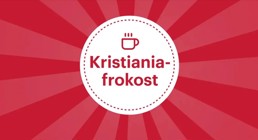Poor communication puts lives at risk
-
Sist oppdatert
14. april 2023
-
Kategori
-
Tema
- Communication
- Policy
- Strategy
- Covid-19
- Measures
Why England failed and Scotland succeeded with communication during COVID-19.
KNOWLEDGE AT KRISTIANIA: Communication during a pandemic
Covid-19 and Public health practitioners have long known that poor communication during health crises put lives at risk. This is why the WHO and most national public health agencies invest in risk and crisis communication.
However, that does not mean it is always effective. In fact, COVID-19 has provided the opportunity to better understand what can go right and wrong in strategic communication efforts to prevent avoidable deaths and illnesses.
Very similar – yet very different outcomes
Throughout the COVID-19 pandemic, both English and Scottish COVID-19 death rates were higher compared to other countries in Europe. However, the death rates in England were significantly worse than Scotland’s despite sharing the island and a similar set of COVID-19 policies. Why?

In most cases, one of the challenges in comparing different national health campaigns can be dissimilarity in culture, language, social, and political systems. Additionally, within the context of the COVID-19 pandemic, there are challenges in comparing radically different material responses to the pandemic (e.g., health policy implemented).
However, given that England and Scotland share a three-century national history, language, an overarching political structure in the British government, and had similar policy approaches to the pandemic, they provide the opportunity to directly and meaningfully compare divergent communication strategies.
Communication through text and visuals
In terms of communication strategy, both English and Scottish politicians and health experts communicated on a daily basis. Both campaigns relied the visual messages available in the media, during press briefings, and online making the campaigns visual arguments for self-protective behaviors.
We use this comparison between English and Scottish government response to COVID on social media to directly evaluate the impact and importance of political and health communication during pandemics focusing on the combined use of visual and textual information to communicate.
Poor messaging is fatal
So, what can we say about this? There are a lot of possible factors contributing to Scotland’s relative success compared to England.
However, when we look at the role of communication and visual communication – previous research very clearly indicates that effective communication saves lives and ineffective communication can cost them.
In England poor communcation contributed to its death toll and by comparison we see a different story emerge in Scotland. There are four insights we can take from this comparison.
Four lessons learned
1. Consistent, simple and frequent = success
First, governments need to think about visual branding to create familiarity, consistency, and trust in the messaging. Scotland’s messaging may not have always been as visually dynamic as some of the messages from England, but the consistency and simplicity in the visuals made it easier to focus on the content.
Part of the branding is also using and re-using messages. Scotland tweeted about 600 more health-related messages across the pandemic, but England had a meaningfully larger number of individual images.
Branding isn’t just about the consistency of look and feel but ensuring each message used has optimal effectiveness, which in social media means that one-shot at being seen isn’t enough.
2. Information must explain and be understandable
Second, both good visuals and good text are needed. One of the core weaknesses in England’s self-protective messaging was the utter lack of contextualization or explanation of the visual message recommendations and lack of follow up information with a link.
Moreover, the comparative use of images rather than short video clips means that less information was being communicated by England in almost every message.
3. Support is more effective than fear
Third, the negativity in England’s messaging was astounding during the second wave.
The focus on fear-based messaging when we were months into a pandemic which had claimed 100,000 lives in the UK would have suggested that people were already aware of risk and fear.
But it wasn’t just the fear – it was the negativity from the compliance messaging that seemed to create the conditions for psychological reactance. Even though not all of the messages were negative, the positive ones were drowned out by volume.
Scotland’s messaging remained positive, supportive, and like the government was having a conversation with its people and not admonishing them or trying to make them more afraid.
4. Negative messaging costs lives
And we come back to the final insight which is to remind that there is significant documentation to suggest that negative messaging costs lives. This study doesn’t provide direct evidence but it provides a pretty good clue.
References:
Audra Diers-Lawson, Grace Omondi, Sophie Louise Hillier (2021), «Shooting from the hip or taking careful aim? Developing the VISTA analytic framework comparing English and Scottish visual campaigns for self-protective behaviour throughout the COVID-19 pandemic», Journal of Visual Political Communication, Volume 9, Issue COVID-19 Health Campaigns, Jun 2021, p. 59 - 97
We would love hearing from you:
Send your comments and questions regarding this article by e-mail to kunnskap@kristiania.no.
Siste nytt fra Kunnskap Kristiania
 Kunnskap KristianiaLes mer
Kunnskap KristianiaLes merNår konspirasjoner blir en trussel mot helsa
Helserelaterte konspirasjonsteorier undergraver tilliten til helsevesenet og rammer de mest sårbare. Kunnskap KristianiaLes mer
Kunnskap KristianiaLes merDigital storytelling can improve immigrant health
Digital storytelling is a potentially powerful and culturally responsive approach to improving health equity. Kunnskap KristianiaLes mer
Kunnskap KristianiaLes merEn trygg fremtid starter her
I vår nye temautgave kan du lese hvordan våre forskere og fagfolk jobber både innen hver sine fagfelt, men også tverrfaglig, for å skape gode samfunn for oss. Kunnskap KristianiaLes mer
Kunnskap KristianiaLes merDo strict alcohol policies really work?
A recent study shows how alcohol control measures have affected the rates of alcohol-related diseases in the Nordic countries over the past 30 years.

Meld deg på vårt nyhetsbrev


